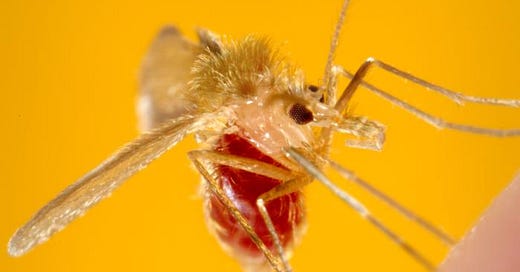Paraguay: 4 cutaneous leishmaniasis cases reported in Acahay district
The Public health department in Asunción, Paraguay (Senepa) report four confirmed patients of cutaneous Leishmaniasis in the district of Acahay, of which three are adults and one is a minor: "They are receiving treatment under permanent supervision and present stable conditions."
“It is a vector disease that is transmitted through sandflies (karachã), not by mosquitoes,” emphasizes Dr. Fernando Núñez, head of the Department of National Programs of SENEPA, due to the confusion that exists about the vector that transmits this pathology, sometimes related to mosquitoes that transmit arboviruses.
He added that the National Leishmaniasis Control Program continues with the permanent mission of articulating strategies with health services throughout the country, for early detection and treatment, as well as awareness-raising and community control activities.
It is reported that in 2023, 56 cases of cutaneous Leishmaniasis were registered in the national territory.
Leishmaniasis is not a single disease, but a group of syndromes due to a variety of species of this parasite. They affect different populations and are related to a characteristic vector, the sandfly.
The disease can range from asymptomatic infections to those causing significant illness and death. Disease can appear on a spectrum from a single skin ulcer to destructive lesions of the face to terminal organ disease.
Leishmaniasis is found in 88 countries worldwide and is broken down between Old World and New World.
Old World leishmaniasis is primarily found in parts of Asia, East and North Africa, Southern Europe and the Middle East.
New World leishmaniasis occurs from northern Mexico to northern Argentina, with rare cases reported in parts of Texas and Oklahoma. In South America it is not found in Chile or Uruguay.
The vector for this parasite is a phlebotomine sandfly. There are a few different species implicated depending on the part of the world.
Sandflies are very small (about 1/3 the size of a mosquito) and make no noise when flying. There bites can sometimes be painless; because of these reasons, many people have no idea they were bitten.
Even one bite of a sandfly can transmit disease, so travelers on short trips can still get infected.
When the female sandfly takes a blood meal it injects the parasite into the wound. Macrophages pick up the parasite and here they multiply until the cell bursts from overcrowding. The parasite goes on to infect more macrophages.
Some of these cells get carried to organs of the body including the liver, spleen and the bone marrow.
There are several species of Leishmania that cause disease in humans. The most common are Leishmania donovani (kala-azar), L. tropica (Baghdad boil), and L. braziliensis (espundia).
To prevent sandfly bites, you should use insect repellents and clothing that covers the entire body, place wire mesh on doors and windows, and use mosquito nets.





